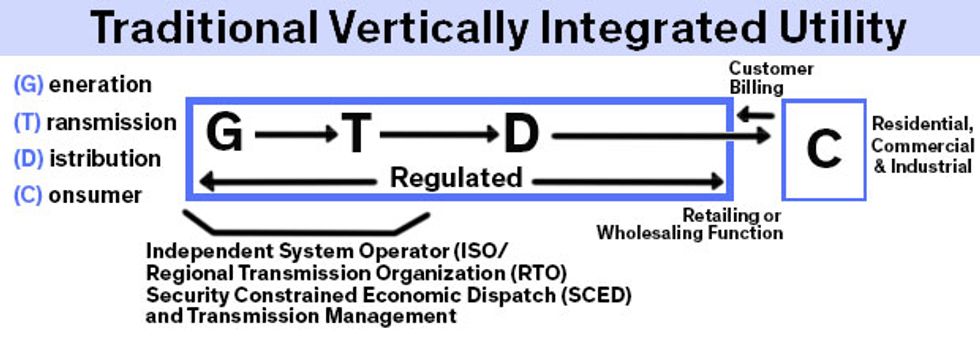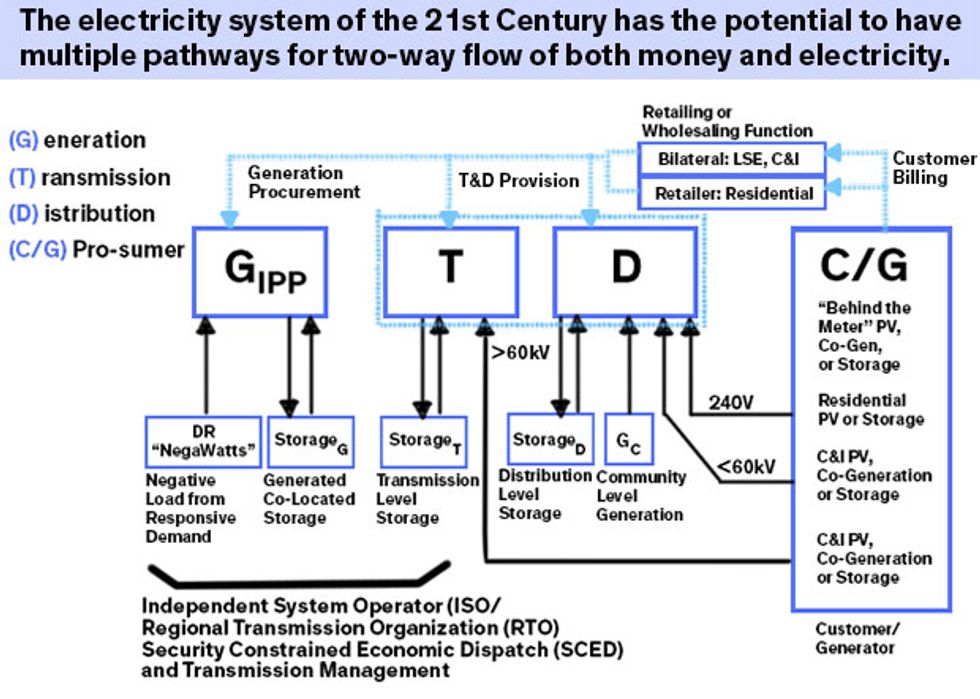For decades, scale economies associated with large, centralized, electricity generation technologies encouraged vertical integration. It also drove down the cost of electricity, fostered universal access, and provided for reliable electric service delivered by a single utility in a given region. That practice gave us the now traditional, vertically integrated, electric utility model.

From its beginning, the U.S. electricity industry emerged as a function of technological advancements, economies of scale, effective financial and regulatory structures that fostered capital investment, and new electric-powered loads. Over the course of a century, there have been successive waves of change in generation, transmission, distribution, market design, and industry regulation. While we expect electricity to continue to be an essential public good, and large-scale, centrally generated electricity to continue to be essential, we also expect traditional utility business and regulatory models to experience enormous stress for three primary reasons.
First, consider the continued development of more cost-competitive and lower-emission centralized generation such as wind farms, utility-scale solar, and natural gas–fired combined-cycle power plants. Traditional thermal generation technologies such as coal and nuclear are being challenged by new generating technologies that are more efficient, flexible (ramping), and modular (scalable). These newer technologies also offer lower emissions, shorter development times (two years for a solar farm versus 10+ years for nuclear plant), and potentially little to no fuel costs (free wind and sun).
Add in advancements in distributed energy resources (DERs) such as photovoltaic (PV) generation and storage.
Last but not least, changes in load patterns from energy efficiency, demand response, and customer self-generation add stress to generating and delivery resources owned and operated by traditional utilities.
This last item—self-generation—is potentially the biggest threat, as it goes against both the traditional utility business model, as well as the competitive market structure as it exists today. The good news? There are are many new alternative combinations of markets, regulations, and technologies possible (illustrated below). The Full Cost of Electricity (FCe-) study coordinated by the Energy Institute at The University of Texas at Austin explores them in its myriad white papers. (IEEE Spectrum is posting blogs from the UT researchers and linking to the white papers as they are released.)

The transition to a new electricity system structure can be complex. Like all transitions, it can introduce considerable uncertainty into an industry that has traditionally eschewed change, remained fairly stable, and clung to long-held incentives to be conservative so that it can meet its obligation to serve the public good.
These and other technological changes will continue to encourage the industry to adopt new technology and business models, spur policy makers to consider alternative regulatory and electricity market structures, and make electricity customers interested in pursuing self-generation that competes with traditional utilities in ways that may further destabilize the existing order.
The FCe-: History and Evolution of the U.S. Electricity Industry white paper [PDF] describes many of the most important, interrelated, and changing technoeconomic, finance, and policy factors that have affected the electric grid over the past century. If history is any guide, they will likely continue to influence the evolution of electric service and the grid this century.
David P. Tuttle is a research fellow at the University of Texas at Austin Energy Institute.




